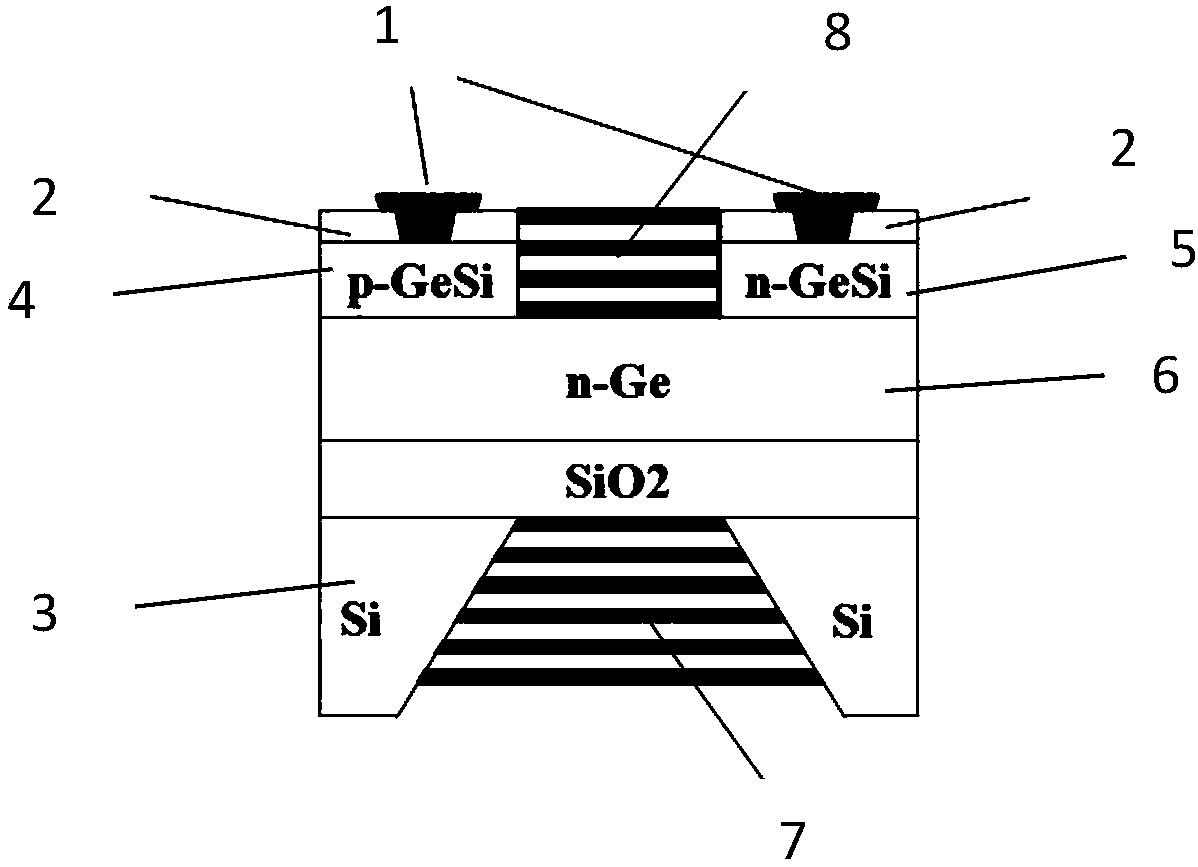Transverse p-n-n microcavity-structured Ge light-emitting device and preparation method thereof
A p-n-n, light-emitting device technology, applied in the direction of semiconductor devices, electrical components, circuits, etc., can solve the problems of high technical level requirements, poor thermal stability, increase of non-radiative recombination centers, etc., to achieve simple process preparation, superior luminous performance, enhanced The effect of luminous efficiency
- Summary
- Abstract
- Description
- Claims
- Application Information
AI Technical Summary
Problems solved by technology
Method used
Image
Examples
Embodiment Construction
[0026] The technical solutions in the embodiments of the present invention will be clearly and completely described below in conjunction with the accompanying drawings.
[0027] The purpose of the present invention is to carry out lateral heterostructure design on Ge light-emitting devices, supplemented by microcavity structure design, and realize p-GeSi / n-Ge / n by means of distributed Bragg reflector (DBR) structures at the top and bottom of the active layer -GeSi lateral structure high-efficiency light-emitting device, providing a method for preparing a lateral p-n-n microcavity structure Ge light-emitting device with simple process, compatible with mature silicon CMOS process and superior performance.
[0028] Such as figure 1 As shown, a Ge light-emitting device with a lateral p-n-n microcavity structure includes an active layer n-Ge layer 6, and the lower surface of the n-Ge layer 6 is Si / SiO 2 Structure 3, n-Ge layer 6 with Si / SiO 2 Structure 3 constitutes a highly dope...
PUM
 Login to View More
Login to View More Abstract
Description
Claims
Application Information
 Login to View More
Login to View More - R&D
- Intellectual Property
- Life Sciences
- Materials
- Tech Scout
- Unparalleled Data Quality
- Higher Quality Content
- 60% Fewer Hallucinations
Browse by: Latest US Patents, China's latest patents, Technical Efficacy Thesaurus, Application Domain, Technology Topic, Popular Technical Reports.
© 2025 PatSnap. All rights reserved.Legal|Privacy policy|Modern Slavery Act Transparency Statement|Sitemap|About US| Contact US: help@patsnap.com

